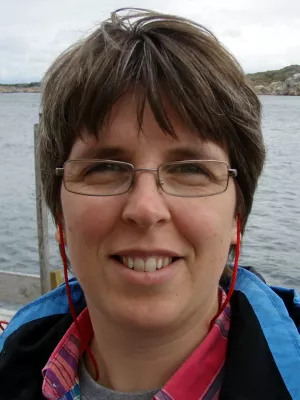
Helena Alexanderson
Professor

Thin loess in Southwestern Sweden
Author
Summary, in English
A thin (20–80 cm), patchy layer of silt-rich sediment occurs at the surface throughout Svartedalen, a nature reserve 30 km north of Gothenburg, Sweden. This surface silt mantles a bedrock-dominated, fracture-valley landscape. Using data from grain-size analysis, OSL dating and detrital-zircon U-Pb dating, we argue that the silt is loess sourced from glacial sediment that was eroded from local bedrock. The sediment has a grain-size distribution typical of wind-blown silt and is especially similar to thin deposits of loess overlying coarser material. OSL ages on five samples range from 1 to 8 ka, although analysis of equivalent dose distributions of one may suggest an age as old as 11 ka. The dates may represent true depositional ages and represent several Holocene eolian events. However, we consider as more likely that the loess was deposited during deglaciation, and quartz-grain signals have been partially reset during bioturbation. U-Pb ages on 273 zircon grains from the loess show prominent peaks at 1.6 and 1.8 Ga, as well as smaller numbers of grains from 1.0 to 1.6 Ga. These ages match dates from the Idefjord Terrane which comprises the bedrock of the study area. We argue that during ice-margin retreat, debris in the glacier was dominated by locally derived debris. This glacial sediment was left in thin patches uplands and particularly in large ice-marginal deltas. These deposits served as the proximal source for the loess. The presence of thin loess in Svartedalen suggests loess to be common in soils of southwest Sweden.
Department/s
- Quaternary Sciences
Publishing year
2024
Language
English
Publication/Series
GFF
Document type
Journal article
Publisher
Taylor & Francis
Topic
- Geology
Keywords
- artificial neural networks
- Computer virus propagation
- Levenberg Marquardt backpropagation
- MSE
- SEIRQ model
Status
Epub
ISBN/ISSN/Other
- ISSN: 1103-5897

